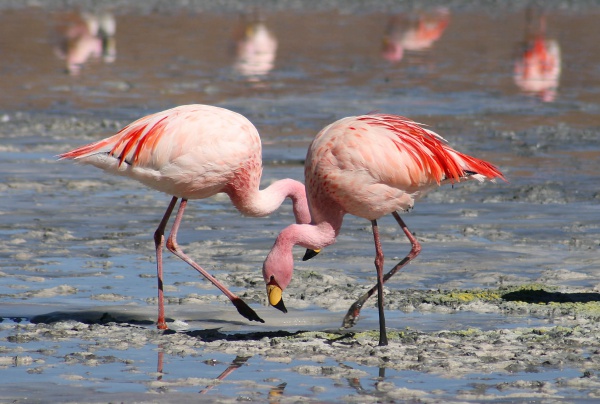Facts About Flamingo
Flamingos, sometimes spelled "flamingoes" are captivating wading birds belonging to the family Phoenicopteridae, the sole family in the order Phoenicopteriformes. There are four species of flamingos in the Americas, including the Caribbean, and two species in Africa, Asia, and Europe. The name "flamingo" derives from the Portuguese or Spanish word "flamengo" meaning "flame-colored" while their scientific name "Phoenicopterus" translates to "blood red-feathered."
Historically, flamingos were thought to be closely related to long-legged birds such as ibises and spoonbills. However, recent genetic research indicates they are more closely related to grebes. One of the most remarkable features of flamingos is their habit of standing on one leg, a behavior believed to help them conserve body heat. These birds are omnivorous, consuming a diet that includes brine shrimp, algae, insects, and crustaceans.
Flamingos are highly social creatures that live in large colonies, which provides protection from predators and improved efficiency in finding food. They form strong pair bonds and vigorously defend their nesting territories. Both parents participate in raising their chicks, feeding them a unique substance known as crop milk.
Regarding conservation, flamingos are housed in zoos worldwide, where efforts are made to encourage breeding. One fascinating method involves using mirrors to create the illusion of a larger flock, thereby promoting social behaviors conducive to breeding.
Flamingos have held significant cultural value throughout history. The ancient Romans considered their tongues a delicacy, and the Moche people of Peru frequently depicted them in their art. Flamingos are the national bird of the Bahamas and have been hunted for various reasons, including the belief that they could cure tuberculosis. Today, pink plastic flamingo statues are a popular lawn ornament in the United States, adding a whimsical touch to many yards.

 Haiti
Haiti